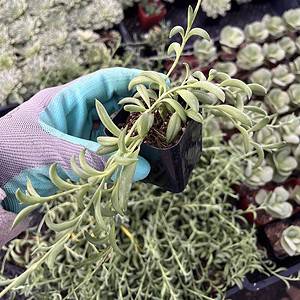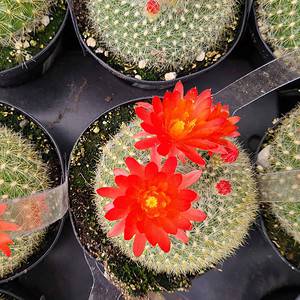No products in the cart.
Monkey grass in the South is a common name and can refer to three types of plants. The first is the Black Mondo Grass (Ophiopogon); the other two types are part of the Liriope genus.
Gardeners use them in similar ways, but they do have differences found in these perennial plants. Hence, it helps to be aware of them before selecting them. These monkey grass outdoor plants work well in shaded areas and are semi-evergreen ornamental grasses.
They are relatively tolerant of pests and diseases, but you must protect them against slugs. So, today we will provide you with information on each species to make a better-informed decision when choosing one.
Types of Monkey Grass Plants
As mentioned, we will discuss three different monkey grass plants you can grow today.
Black Mondo Grass Plant
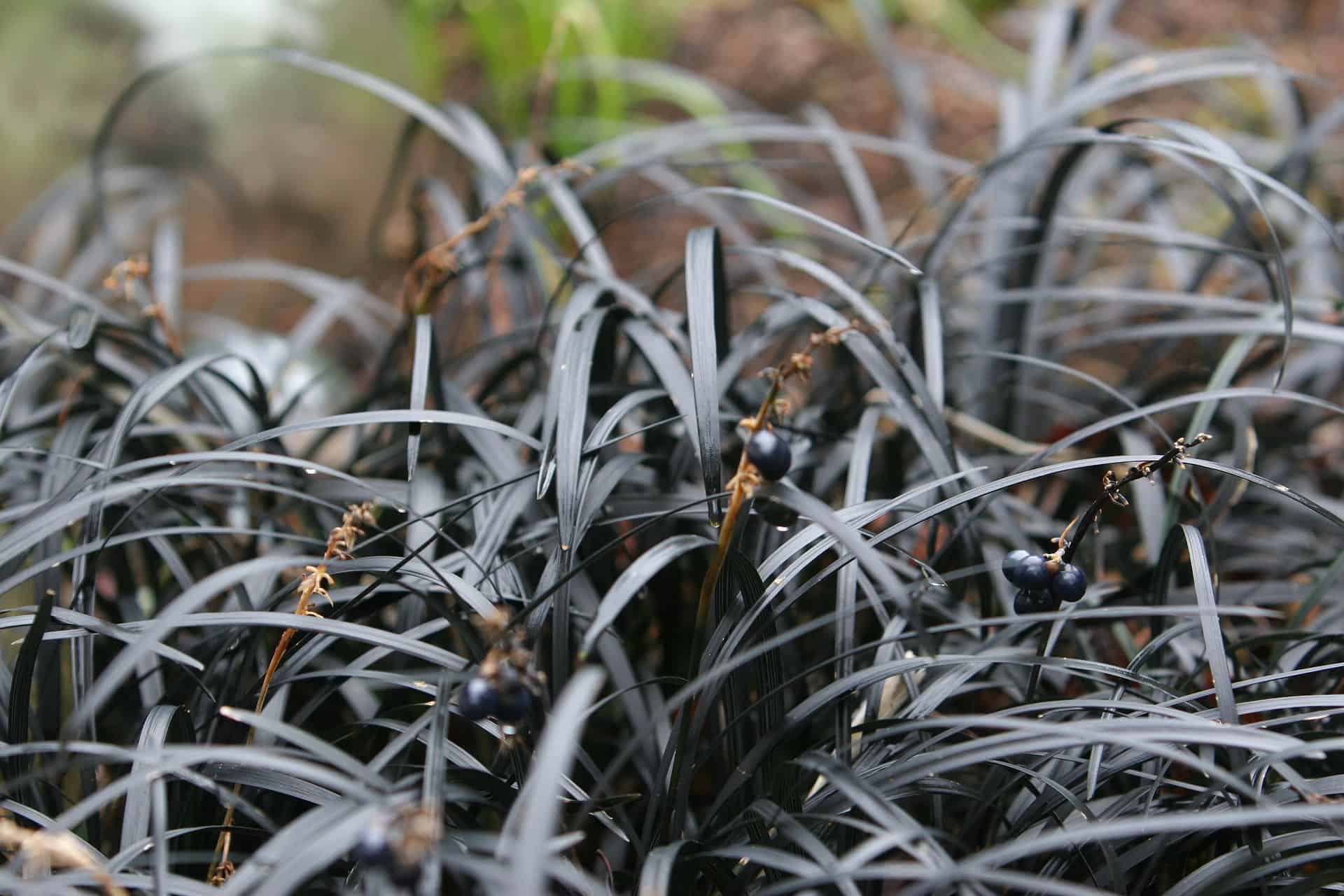
Ophiopogon planiscapus ‘Nigrescens’ is not an actual grass as the traditional grass belongs to the Poaceae family. Instead, the Black Mondo Grass has tuberous roots and is a perennial part of the Lily family. The stemless plant sprouts leave in clumps from the ground.
During summer, you see a flower stalk with small bell-shaped flowers in pink. You can grow the monkey grass as ground cover in semi-shaded areas or as a border plant to an edging plant. Finally, when they grow in rock gardens, they display well with the black foliage.
Hence, it contrasts nicely with other plants like Sedum rupestre ‘Angelina.’ The monkey grass is slow and takes a long time to germinate, up to three months or more. Therefore, the best time to plant monkey grass in this variety is in spring to establish before winter.
The herbaceous perennial has a mature size of 12 inches tall with a wide spread. The native region is Japan, and it thrives in USDA zones 6 to 9. As a groundcover, it can handle foot traffic from your four-legged friends.
Lighting
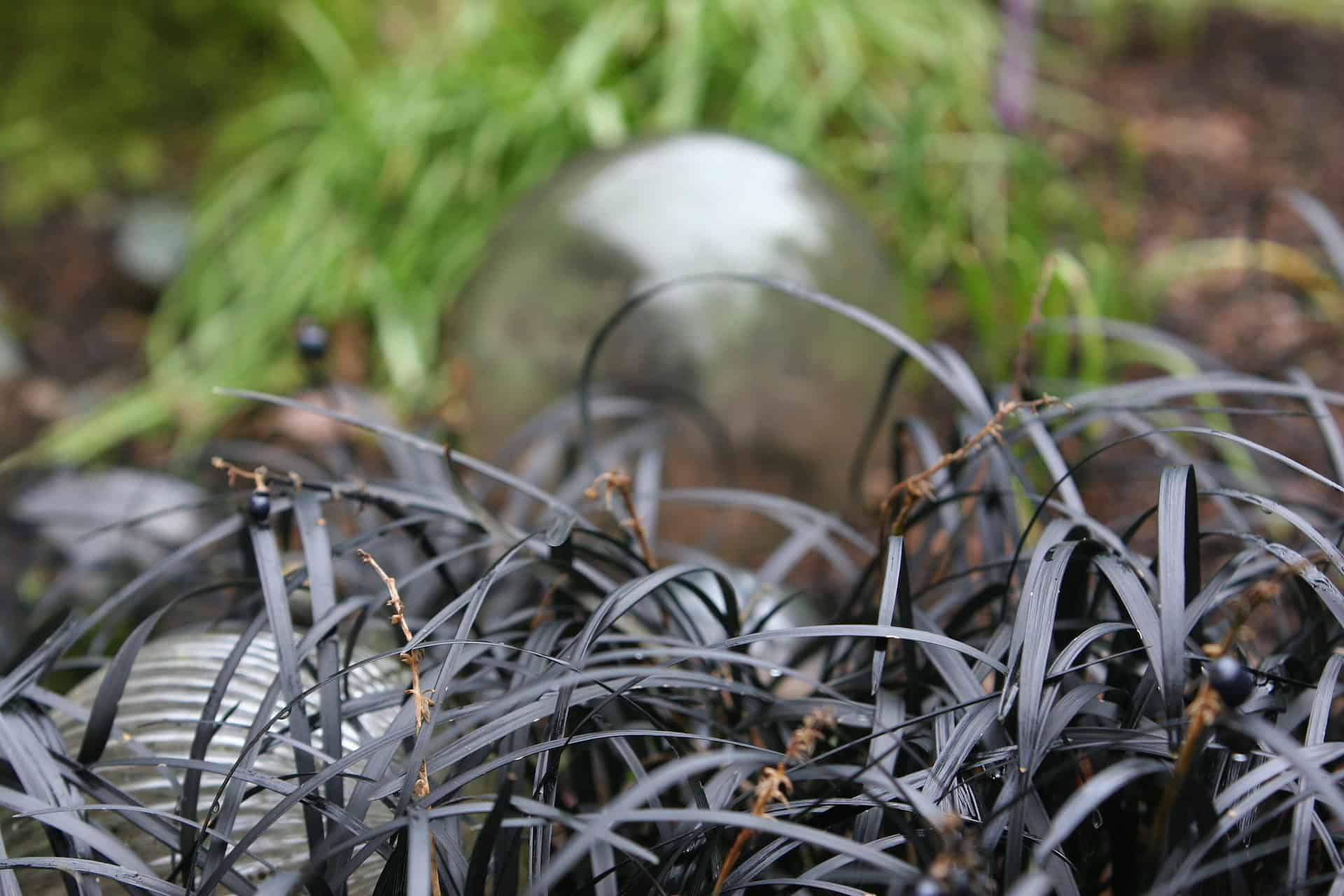
Planting monkey grass in this family helps to space them four inches apart and cover them with some top-dressing using compost to help retain moisture. The fantastic thing is when growing monkey grass like the Black Mondo Grass, it thrives in different lighting conditions.
Still, they do best in partial shade and not direct sunlight in warmer climates.
Soil needs

The monkey grass prefers well-drained soil that is moist and filled with organic matter. Hence, the ideal pH needs to be acidic.
Watering
The evergreen plant indoors needs to be kept moist but not soggy. When temperatures rise, you may need to water more. Still, it does not need as much water as it can lead to root rot during winter.
Temperature and Humidity
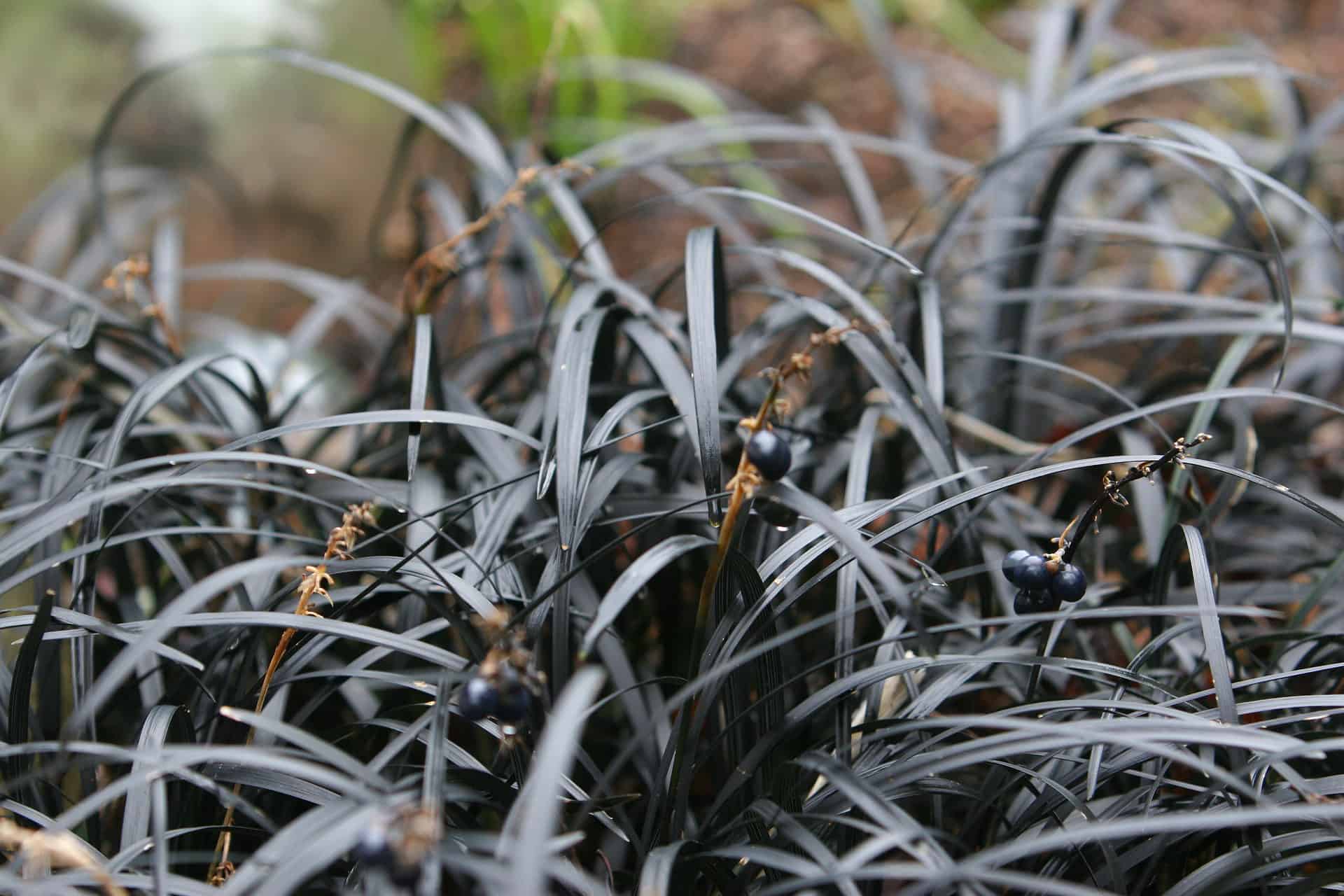
The ideal growing conditions for monkey grass to thrive are warm weather but not extreme heat. The plant can tolerate different humidity levels when the soil is moist, but slugs can become a problem.
Fertilizing
The monkey grass needs no added feeding, and a top dressing of organic compost in spring as fertilizer is ideal for them.
Pruning
You can prune your monkey grass in spring before seeing new growth. It will help make your plant look tidier and helps with new growth. You can use sterilized garden shears or lawnmowers in the highest setting.
Doing this also helps with removing old foliage.
Propagation
The best way of propagating monkey grass in this category is by dividing the fibrous root system in spring. Then, with a garden fork, you can pry the clumping variety to divide them into sections.
Ensure that each plant has a set of leaves. Then with a knife, you can cut through the thickly entwined roots. At the same time, you can remove diseased portions and plant clumps four inches apart in the ground.
If it is impossible to plant them immediately, keep the roots moist until you can.
Creeping Lilyturf (Liriope Spicata)
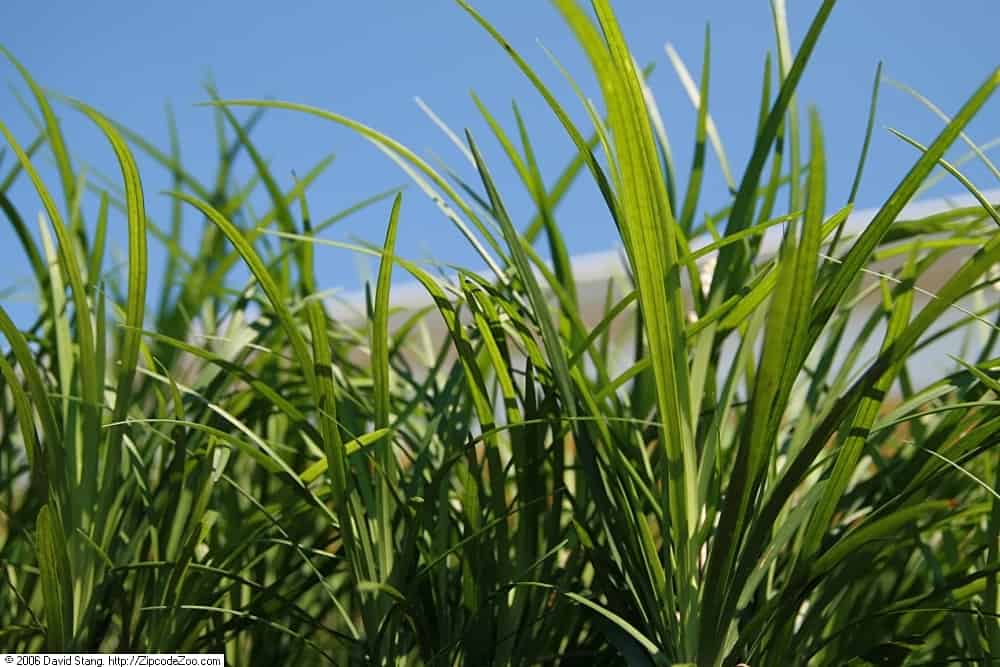
The other genus of monkey grass includes Liriope spicata, with the common name Liriope and Liriope muscari, the big blue lily turf. Both have similar growth habits at a slow rate. But compared to the Black Mondo Grass, it grows taller, up to 18 inches.
The two varieties belong to the Asparagus family. Most of these plants are low maintenance and best planted in spring as the plants are dormant. Compared to the Black Mondo Grass and big blue lilyturf, the creeping Liriope is hardier.
Hence, it is ideal for northern gardeners to be drought tolerant to some extent and help prevent erosion. The blade dark green leaves are narrower, but both plants produce flowers. Yet, the big blue lilyturf has showery blooms as it extends above the foliage.
The creeping Liriope spreads with underground rhizomes while the big blue forms clumps. As the creeping Liriope spreads rapidly, it is invasive and unsuitable for an edging plant. But it makes for an excellent ground cover to control weeds.
The bloom time is from August to September and blooms lavender or purple flowers. The plants are native to Japan, China, and Southeast Asia.
Lighting
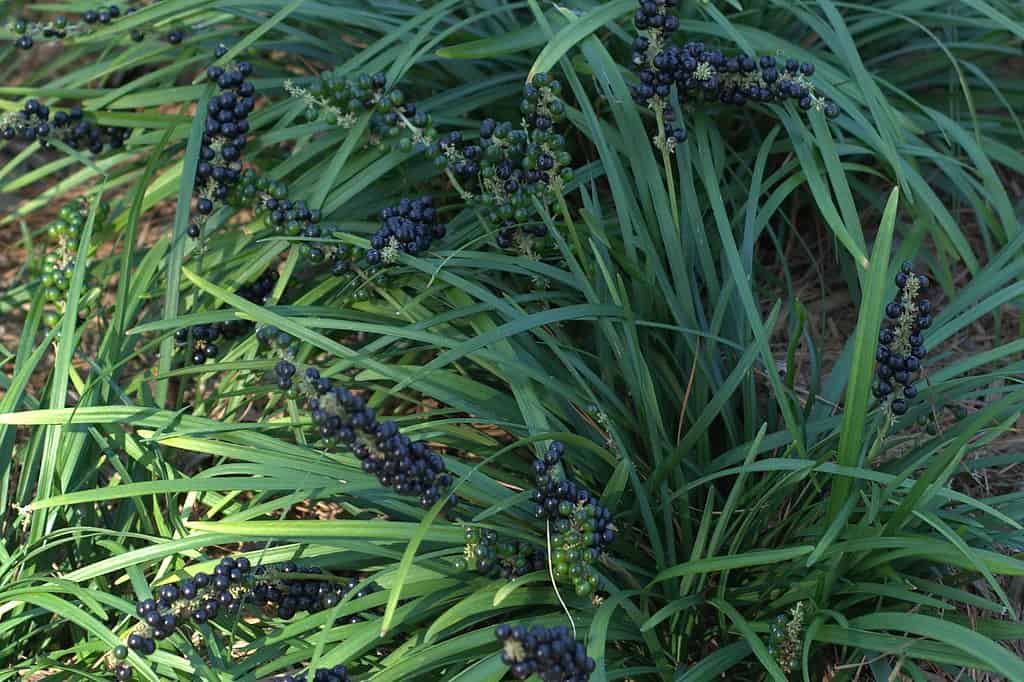
For growing these two types of plants, allow a spacing of up to 18 inches apart as they will fill the gaps. It also helps to plant monkey grass in late fall to early spring to establish itself. If you plant monkey grass in poor soil, amend it with some compost.
You can provide them with an annual top dressing of organic matter. Like other plants with common names of monkey grass, it can thrive in different sunlight conditions.
It is a versatile plant that you can leave in full sun in colder climates.
But in warm environments, providing them with partial to full shade is best.
Soil
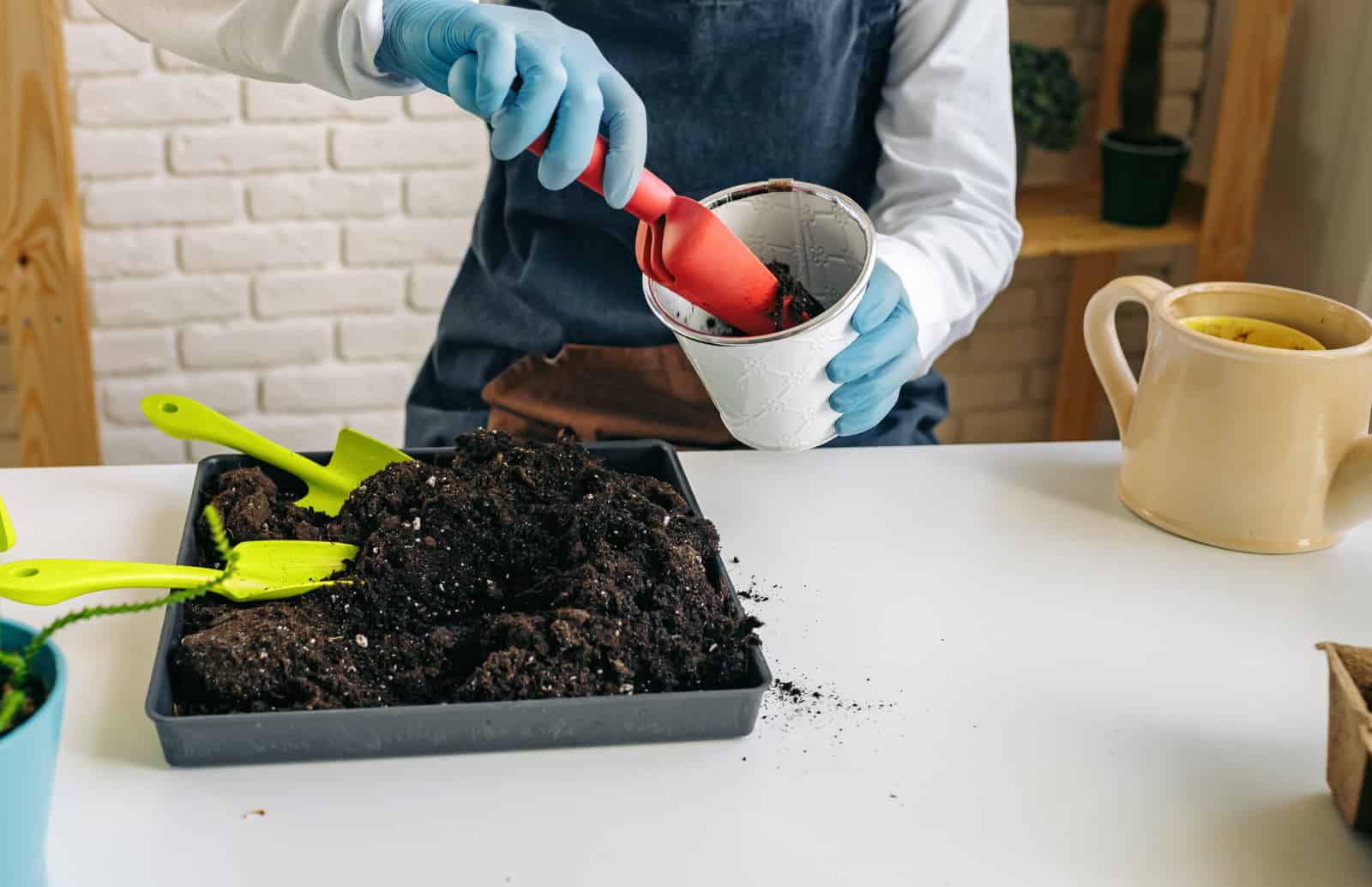
The plants make a great addition to the garden and are the best for growing in well-drained soil with organic matter. It also needs a slightly acidic to neutral pH level between 6.0 to 7.0 to encourage growth. Another special thing with the big blue lilyturf is that you can grow it in containers to control the growth.
Watering
Ideally, the slow-growing spreading monkey grass does well with heavy watering each week. Still, once they are established, they are fairly drought tolerant. As with the other monkey grass, ensure the water drains away, as it can result in root rot.
Temperature and Humidity
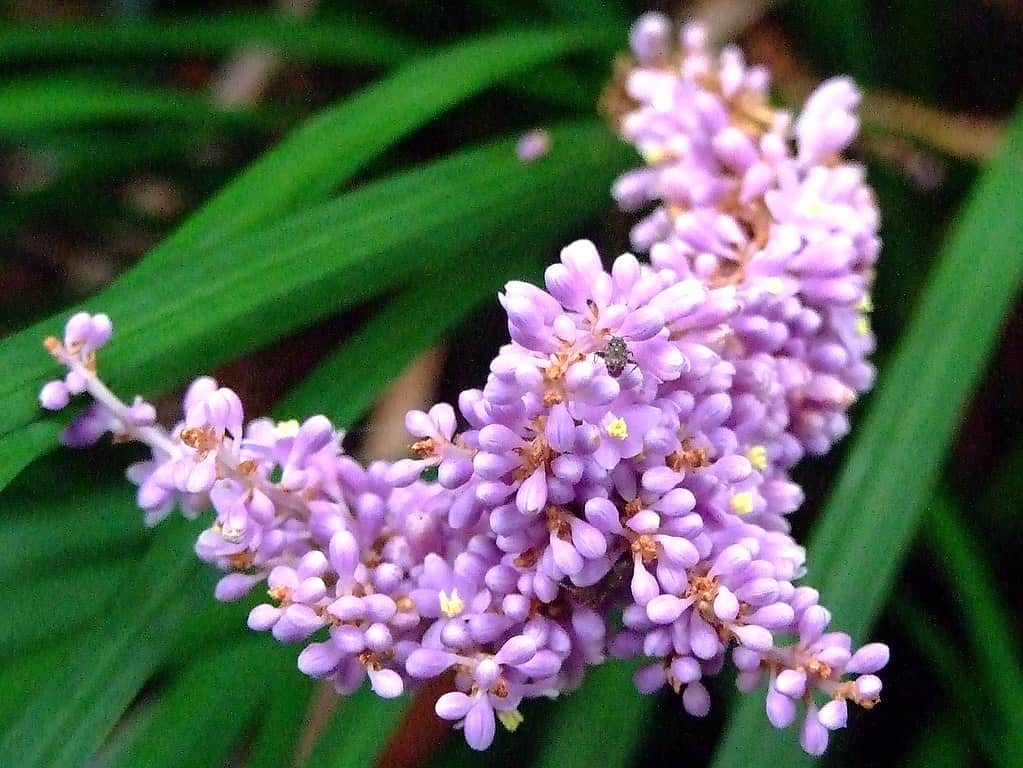
The growing conditions for this monkey grass, when grown as ground cover or as a great border plant monkey grass, thrives in warm but not extreme heat. Still, they can tolerate different humidity and temperature levels.
Fertilizer

When you plant Liriope spicata or Liriope muscari, they are light feeders and do not need fertilizing. The best is to amend the soil with compost or use a slow-release fertilizer for shrubs or trees in spring. Please do not feed your plants from fall to winter, as they can become susceptible to diseases.
Pruning
You can prune your plants by mowing them down with your lawnmower in the landscaping on a high setting when the growing season is over. You may find that in some regions in late summer, the foliage remains green in the garden.
Another notable tip is that these plants can thrive in warm winter areas but cannot tolerate frost, which shows on the foliage in spring. Hence, it will look shabby and prolonged freezing can damage the crown. Thus, pruning is best done in spring.
Propagation
The monkey grass variety you propagate through the root system by dividing them. When divided, you can plant the individual plants into their hole by leaving up to an 18-inch space between them.
Final Thoughts
As you can see, these monkey grass are all versatile plants that form dense clumps. For example, you can use monkey grass as border grass. But pet owners must be informed that the plants are toxic to humans and pets as the berries can cause stomach upset.
Frequently Asked Questions
Monkey grass, also known as Liriope, prefers partial to full shade. It can tolerate some sun but generally thrives in shaded areas with well-draining soil and moderate moisture.
Monkey grass grows best in shaded or partially shaded areas with well-draining soil and moderate moisture. It is commonly used as a ground cover or border plant in gardens, landscapes, and under trees, where it can spread and form lush, attractive clumps.
To care for monkey grass (Liriope) in winter, follow these steps:
- Apply a layer of mulch around the plants to protect the roots from freezing temperatures.
- Reduce watering to prevent waterlogged soil.
- Trim back any dead or damaged foliage in late winter or early spring to encourage new growth.
- Avoid excessive foot traffic on frozen plants.
No, monkey grass (Liriope) is considered a low-maintenance plant. Once established, it requires minimal care and can thrive in various conditions with little attention.
No, monkey grass (Liriope) does not attract mosquitoes. It is not known to be a plant that attracts mosquitoes or promotes their breeding.
Yes, monkey grass is known for its spreading growth habit. It forms dense clumps and sends out runners or rhizomes, which allow it to spread horizontally. This characteristic makes it an excellent ground cover, but it’s essential to monitor its growth to prevent it from overtaking other plants in the garden.
Whether you want to buy, sell, or simply reach out to other plant enthusiasts, Plantly is the right place to be!
-
$4.75Sold By: Cacti and Exotica
In stock
2″ String of Bananas
Only 10 available and it’s in 3 people’s basketRated 4.98 out of 5 based on 59 customer ratings00Sold By: Cacti and Exotica -
$16.00Sold By: Beauties & Beasts
In stock
Cactus – Echinopsis chamaecereus (clumping)
Rated 4.83 out of 5 based on 24 customer ratings00Sold By: Beauties & Beasts -
$14.99Sold By: BubbleBlooms
In stock
Philodendron Silver Sword, 4 inch pot, Philo selloum, erythrinum, hastatum Spathiphyllum
Only 98 available and it’s in 1 people’s basketRated 4.81 out of 5 based on 279 customer ratings01Sold By: BubbleBlooms -
$8.99 – $12.99Sold By: Succulent Oasis
In stock
Scarlet Crown or Notocactus Haselbergii | A lovely cactus that produces amazing blooms
Rated 4.84 out of 5 based on 352 customer ratings16Sold By: Succulent Oasis
